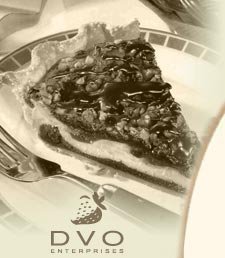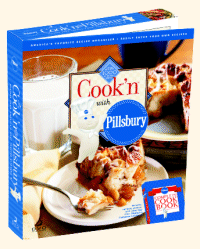
|
Never miss another recipe... Sign up for our free monthly newsletter today!
Subscribing will not result in more spam! I guarantee it! NEWSLETTER
• Current Issue• Newsletter Archive • Sign Up Now 
Cook'n with Betty Crocker 
Cook'n with Pillsbury 
Cook'n with a Taste of Home 
Cook'n in Italy 
Cook'n in Mexico |
 |
01-Types of Chicken |
|
The recipe below is complete except for the ingredient amounts (_). Since the recipes offered at DVO.com are brand name recipes, our publisher partners require us to account for each recipe distributed. To get the entire recipe click Request Recipe below. This is the best 01-Types of Chicken recipe on the web!! Everyone loves chicken! And what isn't to love about it? It can be fixed any which way you choose-roasted to a turn, fried to a crisp, tucked into soups or sandwiches, stir-fried, to a creamed, stuffed, grilled or slowly simmered. You'll never run out of things to do with chicken. And if it's flavor you're after, chicken is friendly toward just about any seasoning; from hot and spicy to cool and fruity, you can make it any way you want. It's so versatile that it earns an "A" for cooperation in the kitchen. The only thing that might ruffle your feathers is trying to decide what type of chicken to buy. Do you find it tough to choose? Do you find it puzzling to decide between a fryer or a roaster, a free range or Amish chicken, frozen or fresh? We're here to help. BIRDS OF A FEATHER Listed below are some facts about various types of chicken you'll find in the supermarket, plus information on the different ways chickens are raised. Broiler-Fryer Chickens: This all-purpose chicken weighs from 3 to 3 1/2 pounds; the best bargain is the whole bird. Larger birds will have a higher ratio of meat to bone. Allow about 3/4 pound (bone-in) per serving. Roaster Chickens: This chicken is larger than the broiler-fryer chicken, weighing 4 to 6 pounds. Yet despite their larger size and longer cooking time, they are still tender and stay moist. Stewing Chickens: This chicken (also referred to as a hen) weighs 4 1/2 to 6 pounds and provides a generous amount of meat. It is mature so it is not as tender as the roaster or broiler-fryer, but it's a very flavorful bird and is best used in stew and soup recipes. Rock Cornish Hens: These small, specially bred chickens (also referred to as game hens) weigh 1 to 1 1/2 pounds and have only white meat. Allow one-half to a whole hen per person. Look for these hens in the grocery freezer case. RAISING CHICKENS Most chickens in your local supermarket are commercially raised; however, if you purchase your chickens from farmers' markets, butchers or specialty food stores, you may see these different types of chicken. Some people believe that raising chickens by these methods gives you a more flavorful bird in the end. Read on to find out more. Amish Chickens: Amish chickens are raised on farms in Amish and Mennonite areas, mainly in east central Ohio and northern Indiana, using "old-fashioned" methods. Chickens are fed from hanging baskets inside large barns where they can roam. The feed comes from local co-ops and is tested for pesticides and insecticides. The chickens are not given hormones or any other growth-stimulation drugs. They are given antibiotics only when necessary at two weeks old (antibiotics stay in the bodies of chickens for two weeks). The chickens are processed when they are seven weeks old, and they are slightly smaller than some in the industry. Due to the type of feed and methods used in raising, these chickens have whiter skin than chickens from commercial processors. Some people believe that these chickens are moister and have a fresher flavor than commercial chickens. Free-Range Chickens: The term "free-range" describes a method of raising poultry whereby animals are allowed to roam and have access to pasture. In contrast to mass-produced birds, free-range chickens are raised in portable houses or pens that are moved regularly, so the chickens can forage for a variety of food such as grass and seeds. There are two popular methods for raising free-range chickens. In the first method, long, portable houses, holding up to 400 chickens, are towed by tractor every few weeks to new locations in the pasture. These houses are enclosed in chicken wire with tarp-covered roofs and doors on both ends. The chickens are allowed out of these houses during the day, and the chickens usually stay within 100 feet. The other popular method uses bottomless pens that are moved daily to fresh pasture. From 75 to 100 chickens are placed in these pens, where feed and water are available. The chickens are allowed to forage on plants, seeds, insects and worms. Most free-range farms are relatively small, with between 5,000 and 8,000 birds. Because these chickens are allowed to roam and to eat not only feed but also grass, plants and seeds, some people believe that they are moister and tastier than commercial chickens. There are no government standards for free-range chicken. Kosher Chickens: The word kosher generally refers to Jewish dietary laws. Kosher products are sanctioned by stringent Jewish law to adhere to specific preparation, so a food labeled as kosher means that it is acceptable to eat according to this law. Chicken processed according to kosher guidelines is given a symbol, U, indicating that the laws have been followed and the product does not contain any nonkosher ingredients. Another symbol is the K, which also stands for kosher. Kosher chickens generally taste a bit saltier than conventional chicken because salting the bird is part of the koshering process. Organic Chickens: The term organic refers to "earth-friendly" methods for growing and processing foods. These chickens are not given hormones or antibiotics, and they are fed organic feed, which is free from pesticides, by-products and growth stimulators. A food labeled "certified organic" means that the farm has been inspected and found to comply with the guidelines below, developed by an organization of organic farmers: 1. No harmful chemicals have been applied to soil or products for at least three years. 2. The farmer and processor have annual certified inspections. 3. The farmer and processor have kept detailed records of their practices. 4. The farmer uses ecologically friendly methods and substances to control pests and enrich the soil. An organic chicken is generally thinner and yellower, and has less fat and more flavor than conventional chicken. Many organic chickens are also free-range. From "Betty Crocker Best Chicken Cookbook." Text Copyright 1999 General Mills. Used with permission of the publisher, Wiley Publishing, Inc. All Rights Reserved. 02-How Do I Buy Great Chicken or Turkey? 03-Poultry Storage 04-How to Flatten Chicken Breasts 05-Cutting up a Whole Chicken 06-How to Bone a Chicken Breast 07-Get the Facts on Food Safety 08-Handling Food Safely 10-Thermometer Facts 11-Roasting Chicken and Turkey 12-Great Grilling 14-Poaching Chicken 15-How Much Poultry? 16-Microwaving Poultry 17-Use Your Favorites! 18-Moist Poultry Secrets 09-Check It Out! 13-Carving Poultry |
|
|
Affiliate Program | Privacy Policy | Other Resources | Contact Us
© 2008 DVO Enterprises, Inc. All rights reserved. Sales: 1-888-462-6656 |
